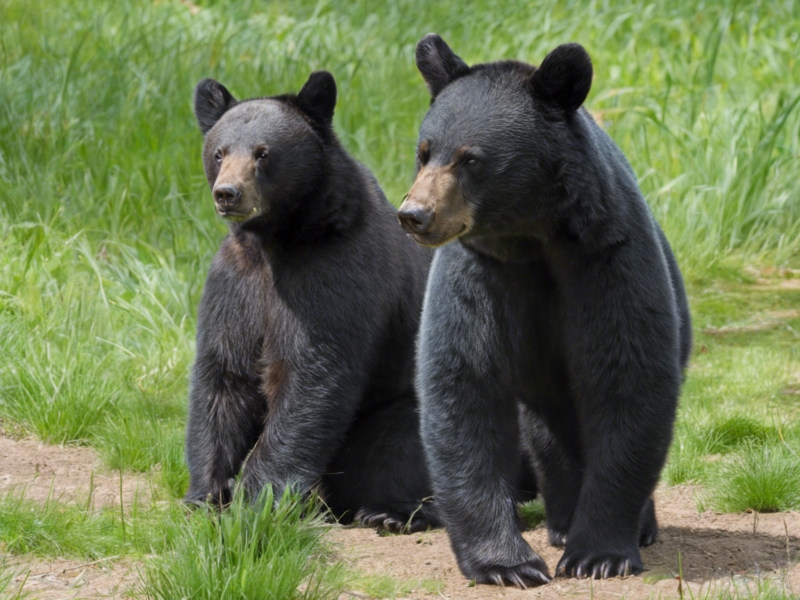Introduction
Woburn Safari Park is a popular destination in the UK known for its fascinating wildlife encounters. One of the highlights of this park is the remarkable Black Bears exhibit. These majestic creatures never fail to captivate visitors with their power, agility, and undeniable charm. In this article, we will delve into the world of Woburn Safari Park’s Black Bears, exploring their behavior, habitat, conservation status, and the unique experience of observing them in action.
Understanding Black Bears
Black Bears (Ursus americanus) are native to North America and are the most common bear species on the continent. Despite their name, they can range in color from black to various shades of brown and even white. These adaptable animals have a diverse diet that includes berries, nuts, insects, fish, and small mammals. Black Bears are known for their excellent climbing skills and are also proficient swimmers.
Habitat and Range
Black Bears can be found in a variety of habitats, including forests, mountains, and swamps. They have a wide range that extends across North America, from Canada to Mexico. In the wild, Black Bears establish territories that they will defend from other bears. They are solitary animals, except for mothers with cubs or during the mating season.
Behavior and Communication
Black Bears are generally shy and elusive animals, avoiding human interaction whenever possible. They are primarily active during the early morning and evening hours, spending the rest of the day resting in sheltered areas. Black Bears use various vocalizations, body language, and scent marking to communicate with each other. They have an acute sense of smell, which they rely on heavily to navigate their surroundings and locate food.
Conservation Status
The Black Bear population has faced significant challenges due to habitat loss, poaching, and conflicts with humans. However, conservation efforts have helped stabilize their numbers in many areas. In the United States, Black Bears are protected under various laws, and hunting regulations have been put in place to ensure sustainable population levels. Education and public awareness play a crucial role in promoting coexistence between humans and Black Bears.
The Woburn Safari Park Experience
Woburn Safari Park provides visitors with a unique opportunity to observe Black Bears up close in a carefully designed habitat that mimics their natural environment. Visitors can witness these magnificent creatures engaging in various behaviors, such as foraging for food, climbing trees, and playing with enrichment items. The park’s knowledgeable staff are on hand to provide insights into Black Bear behavior, biology, and conservation.
Tips for Visiting Woburn Safari Park’s Black Bears
-
Arrive Early: Black Bears are most active during the cooler parts of the day, so visiting in the morning or late afternoon increases your chances of seeing them in action.
-
Bring Binoculars: While the Black Bears at Woburn Safari Park can often be seen from close distances, having binoculars allows you to observe their behavior in even greater detail.
-
Respect the Animals: Remember that these are wild animals, and it’s essential to respect their space and avoid any loud noises or sudden movements that could startle them.
-
Attend Keeper Talks: Check the schedule for keeper talks at the Black Bears exhibit, where you can learn more about these fascinating animals from the experts caring for them.
-
Support Conservation Efforts: Consider making a donation to the park’s conservation programs aimed at protecting Black Bears and their habitats in the wild.
FAQs
-
Are Black Bears dangerous to humans?
Black Bears are typically shy and avoid confrontations with humans. However, it’s crucial to observe safety guidelines when in bear country and not to approach or feed them. -
What do Black Bears eat?
Black Bears have an omnivorous diet that includes plants, berries, insects, fish, and occasionally small mammals. They are opportunistic feeders and will consume a wide variety of food sources. -
How big do Black Bears get?
Adult Black Bears vary in size depending on their gender and geographic location. On average, males can weigh between 200-600 pounds, while females are typically smaller, ranging from 100-400 pounds. -
Do Black Bears hibernate?
Yes, Black Bears are known for hibernating during the winter months in colder regions. They enter a state of torpor where their heart rate and metabolism slow down to conserve energy. -
What are the main threats to Black Bears in the wild?
Habitat loss, poaching, human-wildlife conflicts, and climate change are some of the primary threats facing Black Bears. Conservation efforts focus on addressing these challenges to ensure the long-term survival of the species.
Exploring Woburn Safari Park’s Black Bears is not just a leisurely activity but also an educational experience that fosters a deeper appreciation for these remarkable animals and the importance of conservation efforts in protecting their future. Next time you visit the park, take the time to observe the Black Bears in action and marvel at the beauty of nature’s creatures.

